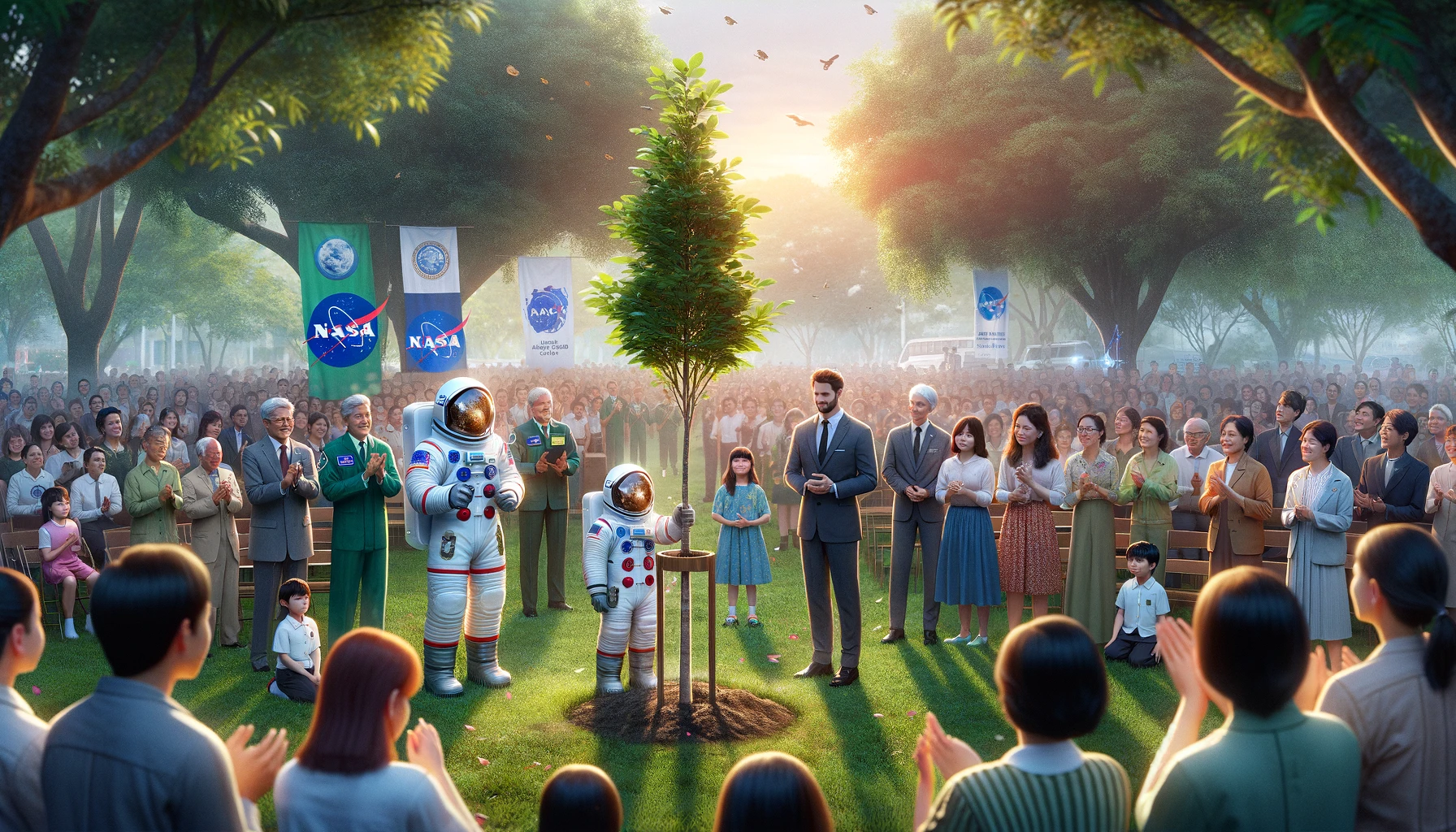“NASA Artemis Generation, Moon Trees, space education, environmental stewardship, Artemis I mission, tree planting, community engagement, STEM education, lunar mission trees, space exploration impact”
“Explore how NASA’s Artemis Generation initiative is planting ‘Moon Tree’ seedlings across America. These trees, which journeyed around the Moon during the Artemis I mission, are now being distributed to institutions nationwide to foster environmental awareness and stimulate educational opportunities in science and space exploration.”

In an inspiring fusion of space exploration and environmental stewardship, NASA has embarked on a unique initiative to distribute ‘Moon Tree’ seedlings across the United States. These are not ordinary trees; they are part of a legacy that began with the Apollo missions and has been revived under the Artemis I mission, which took these seedlings on a lunar journey in 2022. As the nation prepares to witness the growth of these extraordinary trees, let’s delve into the significance of this project and its implications for the future.
The Journey of the Artemis I Moon Trees
The Artemis I mission marked a pivotal moment in NASA’s exploration history, not only for its technological advancements but also for its symbolic gestures of connecting the cosmos with Earth. Among the mission’s cargo were various tree species including sycamores, sweetgums, Douglas firs, loblolly pines, and giant sequoias. These seedlings traveled a staggering 270,000 miles around the Moon, encapsulating the spirit of exploration and discovery. This celestial voyage aims to inspire a new generation, aptly named the ‘Artemis Generation’, to appreciate and engage with the natural environment in a novel way.
Selection and Distribution Process
NASA meticulously reviewed hundreds of applications to determine the most suitable new homes for these Moon Trees. Institutions across the 48 contiguous U.S. states were chosen based on their ability to care for the trees and utilize them as educational tools in their communities. The selection process was stringent, ensuring that each location could provide the right environment for the trees to thrive and serve as a focal point for educational activities.
Notifications of the selected institutions are being made in phases starting from spring 2024, with subsequent notices planned for fall 2024, spring 2025, and fall 2025. This phased approach ensures that each institution is ready to receive and nurture their allotted seedlings, making the most of this unique opportunity to be part of a nationwide science engagement initiative.
Educational and Community Impact
The Moon Trees are more than just botanical specimens; they are beacons of learning and inspiration. NASA’s Office of STEM Engagement, in collaboration with the USDA Forest Service, is spearheading efforts to integrate these trees into educational programs across the country. Schools, universities, and community centers where these trees are planted will have access to a wealth of educational resources. These include lesson plans, interactive activities, and virtual gatherings, designed to enhance students’ understanding of space, science, and environmental conservation.
NASA astronaut Christina Koch, an Artemis II crew member, highlighted the significance of these trees during a dedication ceremony in North Carolina. Her involvement underscores the personal and communal impact of the Moon Trees, linking the awe of space travel with the nurturing of life on Earth.
Legacy and Future Prospects
The concept of Moon Trees isn’t new; it was first introduced by NASA astronaut Stuart Roosa during the Apollo 14 mission. Roosa carried tree seeds with him to space, which were later planted across various locations globally. The Artemis I Moon Trees are a continuation of this legacy, fostering a connection between humanity’s lunar aspirations and Earth’s ecological well-being.
As these trees grow, they will serve as living symbols of human ingenuity and the relentless pursuit of knowledge. They are expected to thrive for centuries, providing shade and beauty for future generations while reminding us of our interstellar aspirations.
Conclusion
NASA’s Artemis Generation of Moon Trees represents a profound blend of past achievements and future aspirations. As these trees take root in communities across the nation, they embody the spirit of exploration and the endless possibilities that it brings. They remind us that the journey of discovery is not just about reaching new heights but also about bringing those experiences back to Earth, enriching our world and inspiring minds young and old. As we look up at the Moon in the night sky, we can now also look around us and see its influence right here on our home planet, growing and flourishing in the form of Moon Trees.
Read More-
- NASA Fermi Reveals the Universe in New E-Book
- NASA New Plan for Mars Sample Return Mission
- NASA TESS Mission Pauses for Vital Upgrades: Enhancing Exoplanet Discovery
- NASA Pioneering Airborne Missions: Advancing Earth and Climate Science










